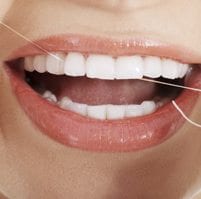 Even if you’re already flossing twice daily as recommended by dentists around the world, including Dr. Mark Sowell at Aesthetic Dentistry Centre in Plano, TX, it may not be enough to fight off tooth decay and gum disease. Although brushing should be a vital part of your oral hygiene regimen, flossing regularly is equally important. Brushing can only remove the easy-to-reach plaque-forming particles and the bacteria feeding upon them.
Even if you’re already flossing twice daily as recommended by dentists around the world, including Dr. Mark Sowell at Aesthetic Dentistry Centre in Plano, TX, it may not be enough to fight off tooth decay and gum disease. Although brushing should be a vital part of your oral hygiene regimen, flossing regularly is equally important. Brushing can only remove the easy-to-reach plaque-forming particles and the bacteria feeding upon them.
These naturally occurring bacteria, which are mostly harmless if kept under control, feed on the plaque, releasing digestive acids that can also eat your tooth enamel. If this process is allowed to continue, it will inevitably lead to cavities: holes in your tooth enamel that allow bacteria inside the tooth, making it vulnerable to infection. The most common location for cavities are between the teeth and just below the gum line where brushing cannot reach.
Dr. Sowell would like to educate you about the importance of flossing in tooth decay and having a healthy mouth and smile.
Why Is Flossing So Important?
Flossing can clear away the plaque and bacteria that you can’t easily reach when brushing in places such as between your teeth and below the gum line. However, while it’s important to be flossing regularly, you also need to be sure you’re doing it effectively. After all, why bother flossing if you aren’t getting the full benefit?
Flossing properly every day can help you avoid tooth decay and painful, time-consuming and potentially expensive dental procedures that can be needed if tooth decay is allowed to continue unchecked.
Flossing Correctly: 4 Easy Steps
- Wrap a strand of dental floss about eighteen inches long around your middle fingers, with more on one side than the other so you can wind up the floss and access a fresh length as you go. Use your thumbs and forefingers to move the floss.
- Push the length of floss in between two teeth and use a gentle “sawing” (back and forth) motion all the way from the top of the teeth down to their base where they erupt from your gums to clear out food particles, plaque and bacteria.
- Wrap the floss around the side of each tooth in a “U” shape and then proceed to gently slide up and down your tooth. Repeat this several times, making sure to go slightly underneath the gum-line.
- If you haven’t been flossing regularly, your gums may bleed a little. This is no cause for concern. This bleeding occurs when the floss irritates the inflammation caused by the bacteria dwelling there. If you floss daily as recommended by Dr. Sowell, you should see an improvement in the health of your gums in one to two weeks.
Floss Picks Are Less Effective Than You Think
Many people choose to buy the floss picks that are now widely available at most drug stores. These “Y” shaped pieces of plastic have floss strung between the “arms” of the “Y” and are intended to make flossing easier for consumers. However, the American Dental Association reports that using a length of “free” floss and your hands is preferred. Floss picks aren’t able to wrap around the base of a tooth in the “U” shape needed to remove floss around the base of the tooth so proper flossing isn’t really possible with them. However, using floss picks is still preferred over just not flossing at all.
Schedule An Appointment With Your Dentist
Most dentists agree that flossing after you brush your teeth is most effective as there will already be less plaque and food particles to get stuck on the floss. If you are in the Plano, TX area and have any additional questions about brushing, flossing or your oral health, call (972) 382-6855 or schedule a complimentary consultation online with Dr. Sowell at Aesthetic Dentistry Centre today.
